Top speed 950 km/h Length 11 m Retired 1954 | Wingspan 11 m Introduced August 1951 First flight July 27, 1946 | |
 | ||
Supermarine attacker edf rc bmfa nationals 2012
The Supermarine Attacker was a British single-seat naval jet fighter built by Supermarine for the Royal Navy's Fleet Air Arm (FAA). The type has the distinction of being the first jet fighter to enter operational service with the FAA. Like most other first-generation jet fighters, it had a short service life due to the rapid development of increasingly advanced aircraft during the 1950s and 1960s.
Contents
- Supermarine attacker edf rc bmfa nationals 2012
- Supermarine attacker 3d model
- Design and development
- UK
- Pakistan
- Variants
- Operators
- Accidents and incidents
- Surviving aircraft
- Specifications F1
- References
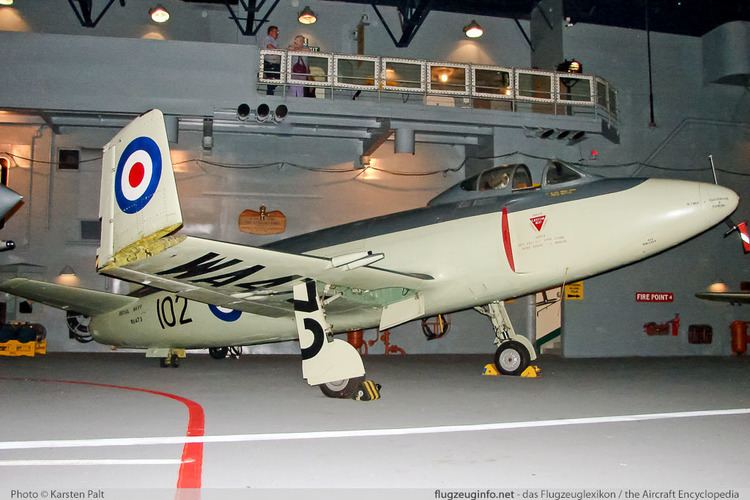
Supermarine attacker 3d model
Design and development
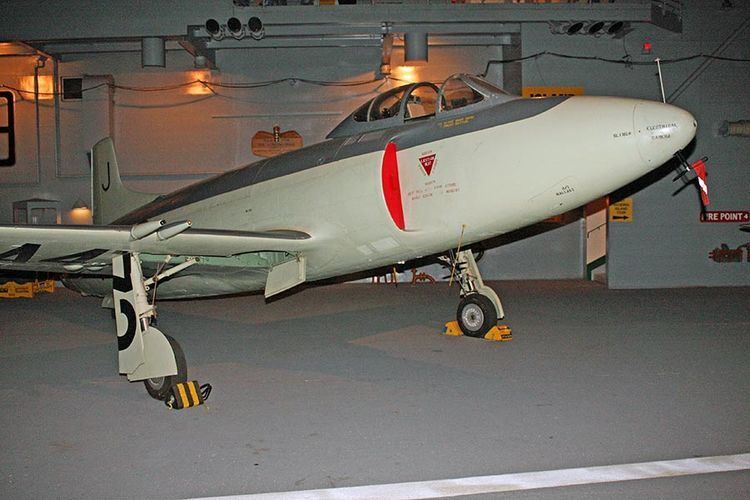
The Attacker developed from a Royal Air Force (RAF) fighter jet project, under Air Ministry Specification E.10 of 1944 (the E for experimental). The design of the Attacker used the laminar flow straight-wings of the Supermarine Spiteful, a piston-engined fighter intended to replace the Supermarine Spitfire, and what became the Attacker was originally referred to as the "Jet Spiteful". The project was intended to provide an interim fighter for the RAF while another aircraft, the Gloster E.1/44 also using the Nene engine, was developed. An order for three prototypes was placed on 30 August 1944, the second and third of which were to be navalised. An order for a further 24 pre-production aircraft, six for the RAF and the remaining 18 for the Fleet Air Arm was placed on 7 July 1945.
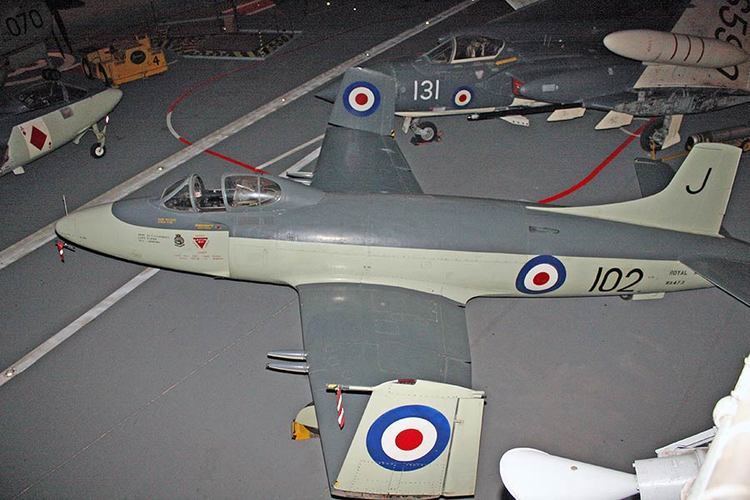
Handling problems with the Spiteful prototype delayed progress on the jet-powered version, leading to the pre-production order of 24 being stopped, although work on the three prototypes continued. The Fleet Air Arm instead bought 18 de Havilland Vampire Mk. 20s to gain experience with jet aircraft. The RAF rejected both designs since they offered no perceptible performance advantage over the contemporary Gloster Meteor and the de Havilland Vampire, the RAF's first two operational jet aircraft. Supermarine offered a navalised version of the project to the Admiralty. The prototype Type 392 serial number TS409 land version was first flown on 27 July 1946, by test pilot Jeffrey Quill.
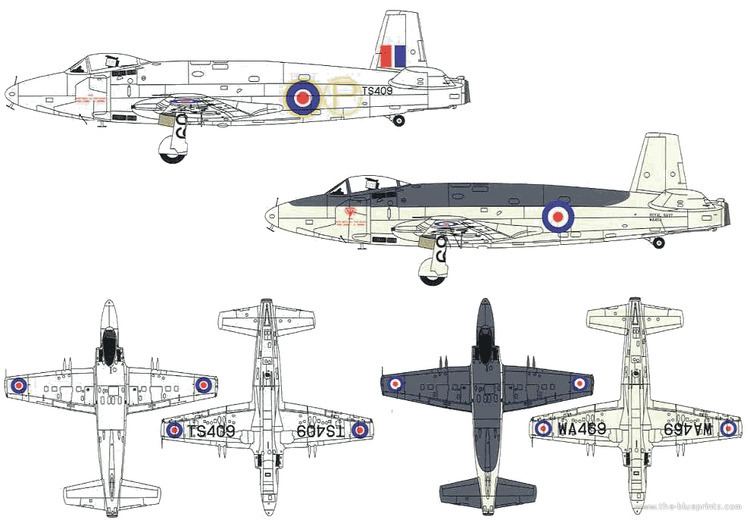
The Attacker suffered from deficiencies which led to it quickly being superseded; one being that the aircraft retained the Spiteful's tail-wheel undercarriage (due to the extent of the re-tooling that would have been required to alter the Spiteful's wing), rather than a nose-wheel undercarriage, thus making the Attacker more difficult to land on aircraft carriers. This same tail-down attitude meant that when operating from grass airfields the jet exhaust would create a long furrow in the ground that "three men could lie down in". Also the new wing was apparently aerodynamically inferior to the original Spitfire elliptic one, with lower critical Mach number, leading to someone quipping that "they rather should have left the Spitfire wing on the thing".
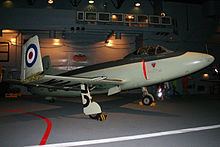
The first navalised prototype, Type 398 TS413 flew on 17 June 1947 flown by test pilot Mike Lithgow, three years after the Meteor had made its first flight. Production orders for the FAA were placed in November 1949. The first production aircraft to take to the skies was the F.1 variant in 1950, entering service with the FAA in August 1951 with the first squadron being 800 Naval Air Squadron. The F.1's armament consisted of four 20 mm (.79 in) Hispano Mk. V cannons, with 125 rounds of ammunition per gun. It was powered by a single Rolls-Royce Nene Mk. 101 turbojet engine.
UK
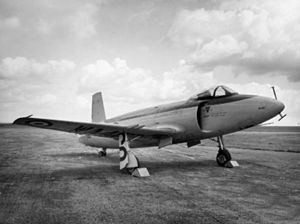
The Attacker had a brief career with the Fleet Air Arm, not seeing any action during its time with the FAA and being taken out of first-line service in 1954. It remained in service with the Royal Naval Volunteer Reserve (RNVR) for a little while longer, being taken out of service in early 1957. The Attacker was replaced in the front line squadrons by the later and more capable Hawker Sea Hawk and de Havilland Sea Venom.
Pakistan
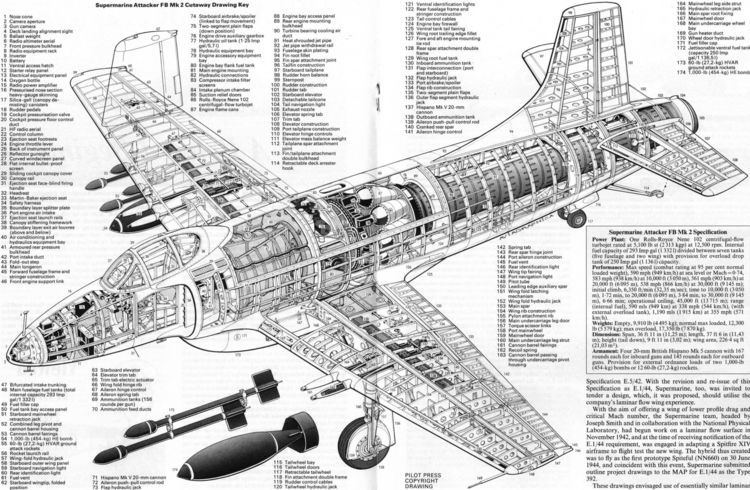
In the early 1950s, when the newly formed Royal Pakistan Air Force (RPAF; later Pakistan Air Force) sought to acquire jet fighters, a lack of funds, combined with pressure from British suppliers persuaded it to acquire the Supermarine Attacker “P” (Type 538), a “de-navalised” variant of the type used by the FAA.

The only squadron to be equipped with these aircraft, from 1953, was an interceptor unit, No. 11 “Arrows” Squadron. A total of 36 Attackers had been acquired when “Arrows” Squadron officially converted to the F-86F Sabre, on 18 January 1956. However, some sources state that Attackers were used by PAF until 1960.
In the RPAF the Attacker was regarded as unsatisfactory, due to frequent maintenance problems and a relatively high attrition rate.
Variants
Two more variants of the Supermarine Attacker were built for the FAA. The FB 1 was a fighter-bomber which differed little from the F 1 except that it was expected to operate as a ground attack aircraft. The third, and last, variant of the Attacker was the FB 2 which introduced a new Rolls-Royce Nene engine and modifications to its structure. The Supermarine Attacker now had eight underwing pylons which could carry two 1,000 lb (454 kg) bombs or eight unguided rockets.
Operators
Accidents and incidents
Surviving aircraft
Following its retirement from service in 1956, Attacker F.1 Serial number WA473 was placed on display on the gate at RNAS Abbotsinch. Completed at VAs South Marston factory in July 1951, it had served with 702 and 736 Naval Squadrons. In late 1961 it was moved to the Fleet Air Arm Museum in Somerset, UK.
Specifications (F.1)
Data from The Illustrated Encyclopedia of Aircraft
General characteristics
Performance
Armament
